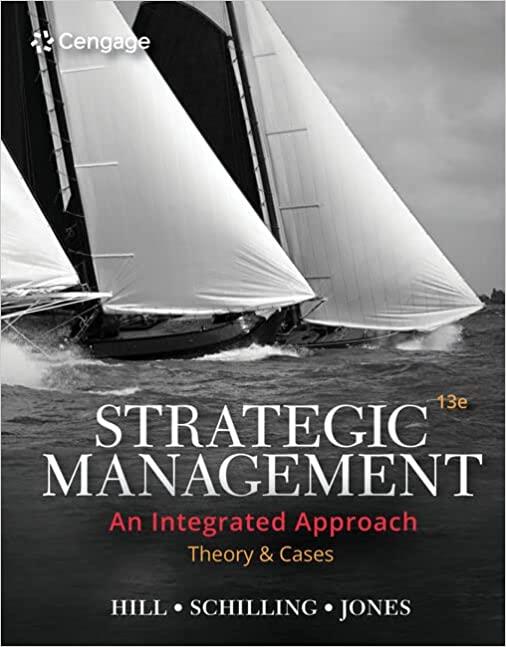Founded in 1837, Cincinnati-based Procter & Gamble (P&G) has long been one of the worlds most international
Question:
Founded in 1837, Cincinnati-based Procter & Gamble (P&G) has long been one of the world’s most international companies. Today, P&G is a global colossus in the consumer products business, with annual sales in excess of $66 billion, over half of which are generated outside of the United States. P&G sells more than 200 brands—including Ivory Soap, Olay, Tide, Fairy, Mr. Clean, Luv’s, Pepto-Bismol, Scope, and Vicks—
to consumers in 160 countries. Historically, the strategy for competing internationally at P&G was well established. The company developed new products in Cincinnati and then relied on semiautonomous foreign subsidiaries to manufacture, market, and distribute those products in different nations. In many cases, foreign subsidiaries had their own production facilities and tailored the packaging, brand name, and marketing message to local tastes and preferences. For years, this strategy delivered a steady stream of new products and reliable growth in sales and profits. By the 1990s, however, profit growth at P&G was slowing.
The problem was that P&G’s costs were now too high because of extensive duplication of manufacturing, marketing, and administrative facilities in different national subsidiaries. The duplication of assets made sense in the 1960s, when national markets were segmented from each other by high barriers to cross-border trade. Products produced in Great Britain, for example, could not be sold economically in Germany due to high tariff duties levied on imports into Germany. By the 1980s, however, barriers to cross-border trade were falling rapidly worldwide, and fragmented national markets were merging into larger regional or global markets due to the emergence of the World Trade Organization (WTO) and regional trade agreements, including the European Union and North American Free Trade Agreement (NAFTA). Also, the retailers through which P&G distributed its products were growing larger and more global themselves. Retailers such as Wal-Mart, Tesco from the United Kingdom, and Carrefour from France were expanding internationally, and they were using their global sales volume to demand deep price discounts from P&G.
In the 1990s, P&G embarked on a major reorganization in an attempt to control its cost structure and recognize the new reality of emerging regional and global markets. The company shut down some 30 manufacturing plants around the globe, laid off 13,000 employees, and concentrated production in fewer plants that could better realize economies of scale and serve regional markets. It wasn’t enough: Profit growth remained sluggish, so in 1999 P&G launched its second reorganization of the decade, “Organization 2005.” The goal was to transform P&G into a truly global company. P&G replaced its old organization, which was based on countries and regions, with one based on seven self-contained, global business units, ranging from baby care to food products. Each business unit was given complete responsibility for generating profits from its products, and for manufacturing, marketing, and product development. Each business unit was directed to rationalize production, concentrating it in fewer larger facilities; to try to build global brands wherever possible, thereby reducing marketing difference between countries; and to accelerate the development and launch of new products.
P&G announced that as a result of this initiative, it would close another 10 factories and lay off 15,000 employees, mostly in Europe, where there was still extensive duplication of assets. The annual cost savings were estimated to be about $800 million. P&G planned to use the savings to cut prices and increase marketing spending in an effort to gain market share, and thus further lower costs through the attainment of scale economies. This time the strategy seemed to work. P&G returned to an era of growth in both sales and profits. Significantly, P&G’s global competitors, such as Unilever, Kimberly-Clark, and Colgate-
Palmolive, continued to struggle as P&G thrived.
QUESTIONS
1. What strategy for competing internationally was P&G using in the period prior to the 1990s?
For decades this strategy seemed to work well. Why?
2. What changed in P&G’s competitive environment in the 1990s? How did these environmental changes impact P&G?
3. What was P&G trying to achieve in the 1990s as it shifted its strategy? What strategy for competing internationally was the company now pursuing? Why do you think the company needed to change its organization structure to implement the new strategy?
4. Can you see any problems with the strategy that P&G had adopted by the early 2000s? How might they be mitigated?
Step by Step Answer:

Strategic Management Theory And Cases An Integrated Approach
ISBN: 9780357033845
13th Edition
Authors: Charles W. L. Hill, Melissa A. Schilling, Gareth R. Jones





